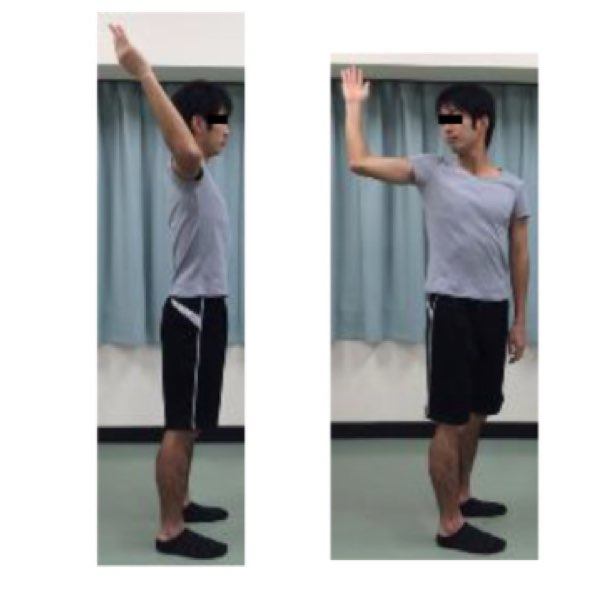It’s pretty obvious that the shoulder is linked to the scapula, which is linked to the trunk. So why do we so often perform isolated arm movement exercises without incorporating the trunk? It’s a good question. The body works as a kinetic chain that requires a precise interaction of joints and muscles throughout the body.
The Effect of Trunk Rotation During Shoulder Exercises
A recent study was published in the Journal of Shoulder and Elbow Surgery that examined the impact of adding trunk rotational movements to common shoulder exercises.
The authors chose overhead elevation, external rotation by the side, external rotation in the 90/90 position similar to throwing, and 3 positions of scapular retraction while lying prone (45 degrees, 90 degrees, and 145 degrees) that were similar to prone T’s and Y’s. The essentially had subjects perform the exercise with and without rotating their trunk towards the moving arm.
EMG of the the upper trapezius, middle trapezius, lower trapezius, and serratus anterior were recorded, as well as 3D scapular biomechanics.
There were a few really interesting results.
- Adding trunk rotation to arm elevation, external rotation at 0 degrees, and external rotation at 90 degrees significantly increased scapular external rotation and posterior tilt, and all 3 exercises increased LT activation
- During overhead elevation, posterior tilt was 23% increased and lower trap EMG improve 67%, which in turn reduced the upper trap/lower trap ratio.
- Adding rotation to the prone exercises reduced upper trapezius activity, and therefore enhanced the upper trap/lower trap ratio as well.
What Does This All Mean?
I would say these results are interesting. While the EMG activity was fairly low throughout the study, the biggest implication is that involving the trunk during arm movements does have a significant impact on both muscle activity and scapular mechanics. Past studies have shown that including hip movement with shoulder exercises also change muscle activity.
This makes sense. If you think about it, traditional exercises like elevation and external rotation involve moving the shoulder on the trunk. By adding trunk movement during the exercises you are also involving moving the trunk on the shoulder.
This is how the body works, anyway. Most people don’t robotically just move their arm during activities, the move their entire body to position the arm in space to accomplish their goal.
It’s also been long speculated that injuries during sports like throwing and baseball pitching may be at least partially responsible for not positioning or stabilizing the scapula optimally. I think this study supports this theory, showing that trunk movement alters shoulder function.
Isolated exercises like elevation and external rotation are always going to be important, especially when trying to enhance the strength of a weak or injured muscle. However, adding tweaks like trunk rotation to these exercises as people advance may be advantageous when trying to work on using the body with specific scapular positions or ratio of trapezius muscle activity.
5 Tweaks to Make Shoulder Exercises Even More Effective
I’m a big fan of understanding how little tweaks can make a big difference on your exercise selection. If you are interested in learning more, this month’s Inner Circle webinar will discuss 5 Tweaks to Make Shoulder Exercises Even More Effective. The webinar will be Tuesday August 25th at 8:00 PM EST, but a recording will be up soon after.
- Inner Circle members can click here to register for the live webinar in the Inner Circle Dashboard or access the recording.
- Click here to join my Inner Circle for less than $10 and get access to this webinar and ALL my past webinars!






